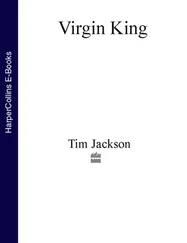“Cus would be sitting in one chair, and Mike across from him in the other, both of them reading fight books. For hours Mike would sit there reading and then asking Cus questions,” recalled Ewald.
All the boys in the house had some claim on D’Amato’s attention and his role as mentor. D’Amato never hid his special feelings for Tyson. Tyson, for the first time, seemed to feel the same way. “Mike got very angry if one of the other boys made fun of Cus,” said Ewald.
At the dinner table lectures, Tyson played chief supplicant. “Hey, Cus, was Joe Gans a good fighter?” he would ask, feigning lack of knowledge, because it was likely that Tyson had spent that whole afternoon reading about Gans, a turn-of-the-century lightweight champion known for his courage. Tyson got the bare facts from the books, and could remember them in detail, but D’Amato explained the significance of a fighter’s achievements: the skills he had, or lacked, the mental battles he fought, how he was situated in the great big canvas of the sport. “Mike mastered the facts; he had a photographic memory,” said Ewald.
At that time as well, Tyson asked Jimmy Jacobs to send up old boxing films for him to watch. Every week a shipment would arrive of a half-dozen films or more and Tyson would sit with D’Amato and examine them in detail. Tyson was interested in the boxing, of course, but more so in the personas of the great champions. It was not that important to him how Jack Dempsey, for example, fought. Tyson watched the films to find signs of the champion’s identity. As someone who had trouble establishing his own sense of self, it was a natural impulse to search and borrow from others.
Tyson marveled at the bravado of Jack Johnson, the most famous of black heavyweight champions, who caught punches with his open glove, talked to people in the stands during the fight, and laughed in the faces of his hapless opponents. He liked the Spartan, warrior look of Jack Dempsey. He found out that among the fighters of the 1920s gold teeth were a status symbol, and had two of his upper front teeth capped in gold.
D’Amato also told him the story of how early twentieth-century black fighter Sam Langford, the “Boston Tar Baby,” used to wear a lot of jewelry until he was approached one day on a train by an elderly and distinguished-looking man. “I want to congratulate you on a fine career,” the older man said in a respectful tone, then left. Langford’s manager asked if he recognized the man. He hadn’t. It was steel tycoon Andrew Carnegie. “But he wasn’t wearing any jewelry, or nothing fancy,” Langford was reputed to have said. The manager replied, “He doesn’t need to. He knows who he is.” After hearing that story, Tyson vowed never to wear the heavy gold chains and pendants then fashionable among some young blacks.
The departure of Atlas also appeared to make Tyson more determined about his training. It was as if he refused to give in to the thought that the absence of the person who had helped him through so many emotional crises in the ring could stop his rise. Tom Patti remembered the advent of that new intensity. “My room was below Mike’s. At night when we were supposed to be asleep, Mike was up shadowboxing for hours. I could hear the thumping and grunting.”
This new Tyson was devoted to D’Amato and boxing, and more believing in the dream of his future. He lived the role of surrogate son and disciplined fighter, and of course continued to win fights with a single knockout punch. With Lorna dead, and D’Amato and Catskill and becoming champion his only other recourse, Tyson moved himself onto the center stage of the drama. He would believe that the paradox was solved—that D’Amato did truly love him—even if the evidence, the proof, wasn’t in yet. He would live that little fiction. Tyson played the role well, as did D’Amato and everyone else who obtained a stake in his growing career. Tyson would have his lapses, he’d bounce between the light and dark of his personality, but in general he tried to follow the script.
The first big lapse occurred at the 1982 U.S. National Championships. The flaw, the overwhelming passivity, struck again. The opponent, Al Evans, had far more experience, yet not enough to make Tyson look as bad as he did. Evans pummeled Tyson to the canvas three times and won the bout by technical knockout. The same thing happened at the 1983 National Golden Gloves Tournament. Tyson lost to Craig Payne in the final. D’Amato and Rooney would claim that the referees and judges unfairly penalized Tyson for using a professional style. But it was the flaw. Tyson gave in to the opponent’s game plan. He stopped punching, which made him easy to hit, or at least easy enough that in three rounds of boxing his opponent racked up the most points.
When Tyson fought well, he functioned like an efficient machine of destruction. When he fought badly, he picked up some bad habits. Before a fight, in the dressing room, he would work himself up into a fevered intensity, which he would then unleash in the first round. If the opponent didn’t go down under the initial barrage, Tyson would get frustrated. In that state he’d forget D’Amato’s defensive and offensive techniques and look like a fighter out of control. Sometimes that’s as far as the regression went. In those cases Tyson’s natural strength and speed were usually more than adequate for victory. But if he regressed more, into the passivity, he tended to hug his opponent and lock arms—to “clinch. “D’Amato’s excuse was that he clinched in order to rest. The reality was that his will to fight had drained away.
Matt Baranski, who started in Tyson’s corner as cut man right after Atlas left, remembered the first time he witnessed Tyson’s self-defeating tendencies. “Mike was a wild man in the locker room before a fight. He’d shadowbox as hard as he could for an hour. Once when Mike was sixteen, he fought this kid in Boston. The kid was only seventeen; he didn’t have a lot of experience. Mike dropped him in the second round and the kid came back and boxed and boxed. Mike started to get tired. If it had gone another round, he would have lost. I warned Cus about that and he said not to worry about it, Mike’s in great shape.”
Baranski soon saw other problems in Tyson. He knew Tyson was capable of affection and attachment, especially toward D’Amato. He also saw the exact opposite. “He had this dog and once I saw him kick it hard. I told him that if he wasn’t so big I’d punch him out for doing that. He denied it to my face. I was standing right there and he denied it.
“He got pigeons, too, put them in a coop behind the house. Maybe he liked them, but he never cared for them. He’d let them freeze in the winter. It didn’t bother him a bit,” added Baranski.
Baranski doubted the depth of feeling Tyson and D’Amato had for each other. At times, they seemed to be bound by mutual self-interest. “Tyson didn’t care for anything or anybody. Mike had it in his head from the beginning that I got to look out for Mike and that’s all there is to it. He lied to Cus all the time. Once, after a fight, he disappeared for three days. Cus asked me to go find him. He showed up with two pigeons in the backseat of the car, told Cus he’d been gone just that one day. Cus knew it was three days. Everyone did.
“I’d ask Cus why he put up with that shit—the lies, Mike screaming at him, spitting on him even, incredible stuff. He told me he was ready to give up on him. He couldn’t stand Mike acting like an animal.”
Baranski felt that this wasn’t the normal feuding between a mentor and protégé, or even a father and son. There’s no doubt that they felt close, but more in the way of Siamese twins. It was as if they had to be with each other in order to exist. The necessity of the attachment created resentment.
Читать дальше










![Brian Thompson - A Monkey Among Crocodiles - The Life, Loves and Lawsuits of Mrs Georgina Weldon – a disastrous Victorian [Text only]](/books/704922/brian-thompson-a-monkey-among-crocodiles-the-life-thumb.webp)

